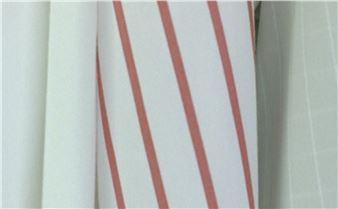Casa de Vidro. Lina Bo Bardi in dialogue with Sverre Fehn
The exhibition presents Lina Bo Bardi's glasshouse in São Paulo, Casa de Vidro (1950–52) inside Sverre Fehn's glass pavilion (1997–2008). The juxtaposition serves as a starting point for a dialogue between two architects who never met, and who worked in distant corners of the world. However, there are surprising similarities between their respective oeuvres: the sculptural use of reinforced concrete, their long-standing commitment to rehabilitation projects and adaptive re-use, and their interest in exhibition design.
The exhibition also encompasses a dialogue between the architectural idioms of Bo Bardi and Fehn and the visual language of artist Veronika Kellndorfer. The National Museum – Architecture has commissioned the Berlin-based artist to reflect Bo Bardi's Casa de Vidro in a new installation created especially for Fehn's glass pavilion. Kellndorfer employs transformed and rasterized photographs of the building, which are silkscreened onto huge glass sheets, creating a representation of the house that is at once spectral and painterly. The installation includes a sculptural re-enactment of Casa de Vidro’s suspended patio on the scale 1:2.

Recommended for you
The exhibition presents Lina Bo Bardi's glasshouse in São Paulo, Casa de Vidro (1950–52) inside Sverre Fehn's glass pavilion (1997–2008). The juxtaposition serves as a starting point for a dialogue between two architects who never met, and who worked in distant corners of the world. However, there are surprising similarities between their respective oeuvres: the sculptural use of reinforced concrete, their long-standing commitment to rehabilitation projects and adaptive re-use, and their interest in exhibition design.
The exhibition also encompasses a dialogue between the architectural idioms of Bo Bardi and Fehn and the visual language of artist Veronika Kellndorfer. The National Museum – Architecture has commissioned the Berlin-based artist to reflect Bo Bardi's Casa de Vidro in a new installation created especially for Fehn's glass pavilion. Kellndorfer employs transformed and rasterized photographs of the building, which are silkscreened onto huge glass sheets, creating a representation of the house that is at once spectral and painterly. The installation includes a sculptural re-enactment of Casa de Vidro’s suspended patio on the scale 1:2.
















